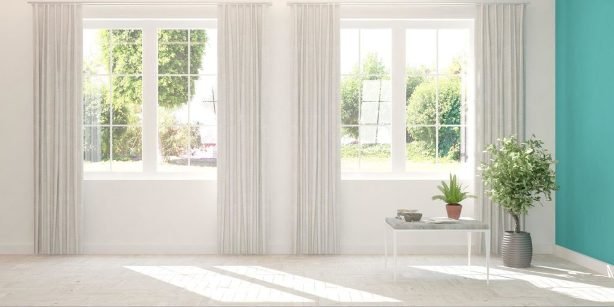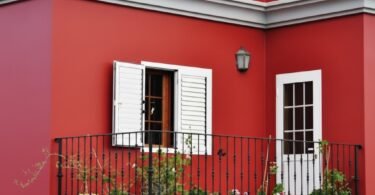Why We’re All Talking About Window Replacement
You know that feeling when you walk past your living room window in January and feel like you’re standing next to an open freezer? Yeah, we’ve all been there. I used to joke that my old windows were basically expensive picture frames that happened to let in some light and a whole lot of cold air. But here’s the thing about home improvement projects, they have this sneaky way of making you realize just how much money you’ve been literally watching blow away with the wind.
When my neighbor Karen started her whole house renovation last spring, she kept going on about how replacing her windows was going to solve all her energy problems. I’ll admit, I was skeptical. We’ve all heard those promises before, right? Some contractor shows up, talks a big game about savings, and suddenly you’re writing checks that make your credit card weep. But after seeing her energy bills drop by almost a third over the winter, I started paying attention.
The window replacement game has changed quite a bit in recent years. We’re not just talking about swapping out old glass for new glass anymore. These days, you’ve got options that sound like they came straight out of a science fiction movie. Triple-pane this, low-emissivity that, argon gas fills, and ratings systems that require a engineering degree to understand. It’s enough to make your head spin faster than a ceiling fan on a hot summer day.
What really got me thinking about this whole energy-efficient window thing was my power bill last August. I’m talking about a number so high, I thought maybe the electric company had accidentally charged me for the entire neighborhood’s usage. That’s when I realized my windows weren’t just letting in light, they were practically inviting the outside temperature to move in and make itself at home. My air conditioner was working harder than a one-legged cat in a sandbox, and my wallet was paying the price.
The funny thing about windows is we take them for granted until they start costing us money. They’re like that friend who seems fine until you realize they’ve been eating all your food and never contributing to the grocery bill. Old windows can be energy vampires, silently draining your bank account month after month while you’re none the wiser. But new, energy-efficient windows? They’re like having a really good financial advisor who works 24/7 without asking for a commission.
Now, I’m not saying window replacement is some magical solution that’ll turn your house into a fortress of energy efficiency overnight. But after doing my homework and talking to folks who’ve been through the process, I can tell you there’s definitely something to this whole energy-efficient window movement. The key is knowing what you’re getting into before you start writing checks.
What Can You Expect to Get Back: The Real Numbers Behind Window Replacement
Let me be straight with you about window replacement costs because nobody likes surprises when it comes to home improvement expenses. We’re not talking about pocket change here. When I started getting quotes for my own house, I quickly realized this wasn’t going to be a “grab some cash from the cookie jar” kind of purchase. We’re talking about an investment that’ll make you think twice about that fancy vacation you’ve been planning.
The price range for energy-efficient windows is wider than a Texas highway. You can find basic Energy Star qualified units starting around $120, which sounds reasonable until you remember that’s just for one window. By the time you factor in all the windows you’ll probably want to replace, plus installation costs that often match or exceed the cost of the windows themselves, you’re looking at a number that might make you need to sit down for a minute.
Here’s where things get interesting though. I talked to a contractor buddy of mine who’s been in the business for twenty years, and he told me something that changed my whole perspective. He said most people focus so much on the upfront cost that they forget to do the math on what they’ll save over time. It’s like buying a car and only looking at the sticker price without considering gas mileage. Sure, you might spend less initially, but you could end up paying more in the long run.
The installation part is where a lot of folks get sticker shock. You can’t just pop these things in like you’re changing a light bulb. Professional installation typically runs at least as much as the windows themselves, sometimes more if your house has any quirks or challenges. And trust me, every house has quirks. I learned this the hard way when the installer discovered my 1950s ranch had some “creative” framing that required extra work to fix.
But here’s where the story gets good. The energy savings from quality window replacement can be pretty impressive. Studies show you can see savings of up to 28% on your annual energy bills if you replace windows in at least half your home. Now, that might not sound earth-shattering, but when you’re looking at energy bills that seem to climb higher every year, 28% starts to look pretty attractive.
Let me put this in perspective with real numbers. If your annual heating and cooling costs are around $2,000 (which is pretty typical for many homes), saving 28% means you’re keeping an extra $560 in your pocket every year. Over ten years, that’s $5,600. Over twenty years, you’re looking at more than $11,000 in savings, and that’s not even accounting for rising energy costs.
The payback period varies depending on your local energy costs, the condition of your current windows, and which type of replacement windows you choose. In areas with extreme temperatures, you might see payback in as little as five to seven years. In milder climates, it might take longer, but you’ll still come out ahead in the long run.
Price vs. Energy Efficiency: Finding Your Sweet Spot
Shopping for energy-efficient windows feels a lot like buying a car. You walk into the showroom with a budget in mind, and suddenly you’re looking at all these features you didn’t know existed, wondering if you really need heated side mirrors or if you can live without them. The window world has its own version of this dilemma, and it can make your head spin faster than a pinwheel in a hurricane.
The most energy-efficient windows on the market will cost you the most money. That’s just basic economics. But here’s what I learned after months of research and talking to way too many salespeople: you don’t need to buy the most expensive windows to see significant improvements in your energy bills and comfort level. It’s like buying running shoes. The $300 pair might be amazing, but the $150 pair will still get you around the block just fine.
The Energy Star rating system has been a game-changer for regular folks like us who don’t want to become window experts just to replace our windows. When you walk into a showroom and ask to see Energy Star qualified windows in your price range, you’re automatically narrowing down your options to windows that meet strict energy efficiency guidelines. It’s like having a pre-screened list of candidates instead of trying to evaluate every single option yourself.
I spent way too much time initially trying to understand all the technical specifications. U-factors, Solar Heat Gain Coefficients, visible light transmittance… it’s like they created this whole language just to confuse homeowners. But then I realized something: the Energy Star folks have already done the heavy lifting for me. They’ve tested these windows and certified that they’ll perform well in different climate zones.
Climate zones matter more than most people realize. What works great in Minnesota might not be the best choice for Arizona. Energy Star windows are rated for different regions, so you can focus on windows that are specifically designed to perform well in your area. This takes a lot of the guesswork out of the equation and helps prevent you from overpaying for features you don’t actually need.
The middle-tier Energy Star windows often provide the best value for most homeowners. These aren’t the cheapest options, but they’re not the most expensive either. They’ll give you solid performance without all the bells and whistles that drive up the price. Think of them as the reliable sedan of the window world, not the flashy sports car, but they’ll get you where you need to go efficiently and comfortably.

The Language of Windows: Decoding the Technical Jargon
Walking into a window showroom for the first time is like visiting a foreign country where everyone speaks a different language. Suddenly you’re hearing terms like “glazing” and “low-E coatings” and trying to nod knowingly while secretly wondering if anyone’s going to provide subtitles. I remember my first meeting with a window salesperson feeling like I needed a translator just to understand what we were discussing.
Let’s start with glazing, which sounds fancier than it actually is. Glazing is just the glass part of your window. When someone talks about double or triple glazing, they’re referring to how many layers of glass are in your window. Single glazing is like wearing a t-shirt in a snowstorm, it’s not going to provide much protection. Double glazing is more like adding a jacket, and triple glazing is like wearing a full winter coat. Each additional layer provides better insulation, but also adds to the cost and weight of the window.
Low-E coatings had me scratching my head for weeks until someone explained it in terms I could understand. Low-E stands for low emissivity, which basically means the coating helps reflect heat. Think of it like having sunglasses for your windows. In the summer, low-E coatings help reflect the hot sun’s rays away from your house, keeping things cooler inside. In the winter, they help reflect your indoor heat back into the house instead of letting it escape through the glass. It’s like having a bouncer at your window who knows exactly what should stay in and what should stay out.
The gas fills between window panes used to confuse me until I realized it’s actually pretty straightforward. Instead of just having regular air between the glass layers, manufacturers fill that space with special gases that provide better insulation. Argon is the most common and affordable option. It’s denser than regular air, so it doesn’t move around as much, which means less heat transfer. Krypton is even better at insulating, but it costs more. Think of argon as the reliable workhorse and krypton as the premium upgrade.
Frame materials each have their own personality and quirks. Wood frames look beautiful and provide good insulation, but they require maintenance and can rot or warp if not properly cared for. They’re like that friend who’s gorgeous but high-maintenance. Vinyl frames are low-maintenance and affordable, but they might not win any beauty contests. They’re the practical friend who always shows up when you need them. Fiberglass frames are strong and stable, expanding and contracting at the same rate as glass, which means fewer seal failures over time. Aluminum frames conduct heat and cold easily, making them less energy-efficient, but they’re strong and slim, allowing for larger glass areas.
Understanding these terms helps you have more productive conversations with salespeople and installers. When you can speak their language, even a little bit, you’re less likely to get overwhelmed by technical jargon or talked into features you don’t need. It’s like learning enough Spanish to order food in Mexico, you might not be fluent, but you can get what you need without pointing at pictures on the menu.
The key is remembering that all these technical features should serve your specific needs and climate. You don’t need to become a window expert, but understanding the basics helps you make informed decisions and ask the right questions. Think of it as learning enough to be dangerous, but not so much that you drive yourself crazy trying to optimize every single specification.
Making Your Decision: Putting It All Together
After all this research and number-crunching, making the actual decision about window replacement comes down to balancing your budget, your needs, and your long-term plans for your home. I went through this whole process myself, and I can tell you it’s both more complicated and simpler than you might expect. More complicated because there are so many options and variables to consider. Simpler because once you narrow down what matters most to you, the choice becomes pretty clear.
Start with your budget, but think about it in terms of total cost of ownership rather than just the upfront price. That $200 window that saves you $50 a year on energy costs might be a better deal than the $120 window that only saves you $20 annually. It’s like buying a more fuel-efficient car, you pay more upfront but save money every time you fill up the tank. The math works out in your favor over time, assuming you’re planning to stay in your home long enough to see those savings.
Your local climate should drive a lot of your decision-making. If you live somewhere with brutal winters, investing in triple-pane windows with low-E coatings makes perfect sense. The energy savings will be substantial, and you’ll be way more comfortable during those months when going outside feels like stepping into a freezer. But if you live in a mild climate, you might not need all those premium features. It’s like buying snow tires in Florida, technically they’re better tires, but you’re paying for performance you’ll never use.
The condition of your current windows matters too. If your windows are so old they’re practically antiques, almost any modern replacement will feel like a huge upgrade. But if your current windows are relatively new and in decent shape, you need to be more selective about which upgrades will provide meaningful benefits. Sometimes the best decision is to wait a few more years and save up for exactly what you want rather than settling for something that’s only marginally better than what you have.
Think about your plans for the house. If you’re planning to move in a couple of years, the most expensive, highest-performance windows might not make financial sense. But if this is your forever home, investing in quality windows that’ll perform well for decades is probably worth the extra cost. It’s like the difference between renting and buying, the math changes based on your time horizon.
Don’t forget about the installation quality. The best windows in the world won’t perform well if they’re not installed properly. This is where doing your homework on contractors becomes really important. Get multiple quotes, check references, and make sure whoever you hire has experience with the type of windows you’re buying. A mediocre window installed perfectly will outperform a premium window installed poorly every single time.
Your Next Steps Forward
We’ve covered a lot of ground here, from understanding the real costs and savings to decoding the technical jargon that makes window shopping feel like learning a foreign language. The truth is, energy-efficient windows can make a real difference in your comfort and your energy bills, but only if you choose the right ones for your specific situation and get them installed properly.
My biggest piece of advice? Don’t rush this decision. Take time to get multiple quotes, understand what you’re buying, and make sure the numbers work for your situation. Good windows are an investment that’ll pay dividends for decades, so it’s worth doing your homework upfront. And remember, the most expensive option isn’t always the best option for your needs.
Start by figuring out your budget and your goals. Are you mainly looking to save money on energy bills, or are you more concerned about comfort? Are you dealing with drafty rooms or windows that fog up? Understanding what problems you’re trying to solve will help guide your choices and prevent you from paying for features you don’t actually need.
Take your time, ask lots of questions, and don’t let anyone pressure you into making a quick decision. The right windows for your home are out there, and with a little patience and research, you’ll find them. Your future self, and your energy bills, will thank you for taking the time to get it right.







Leave a Comment